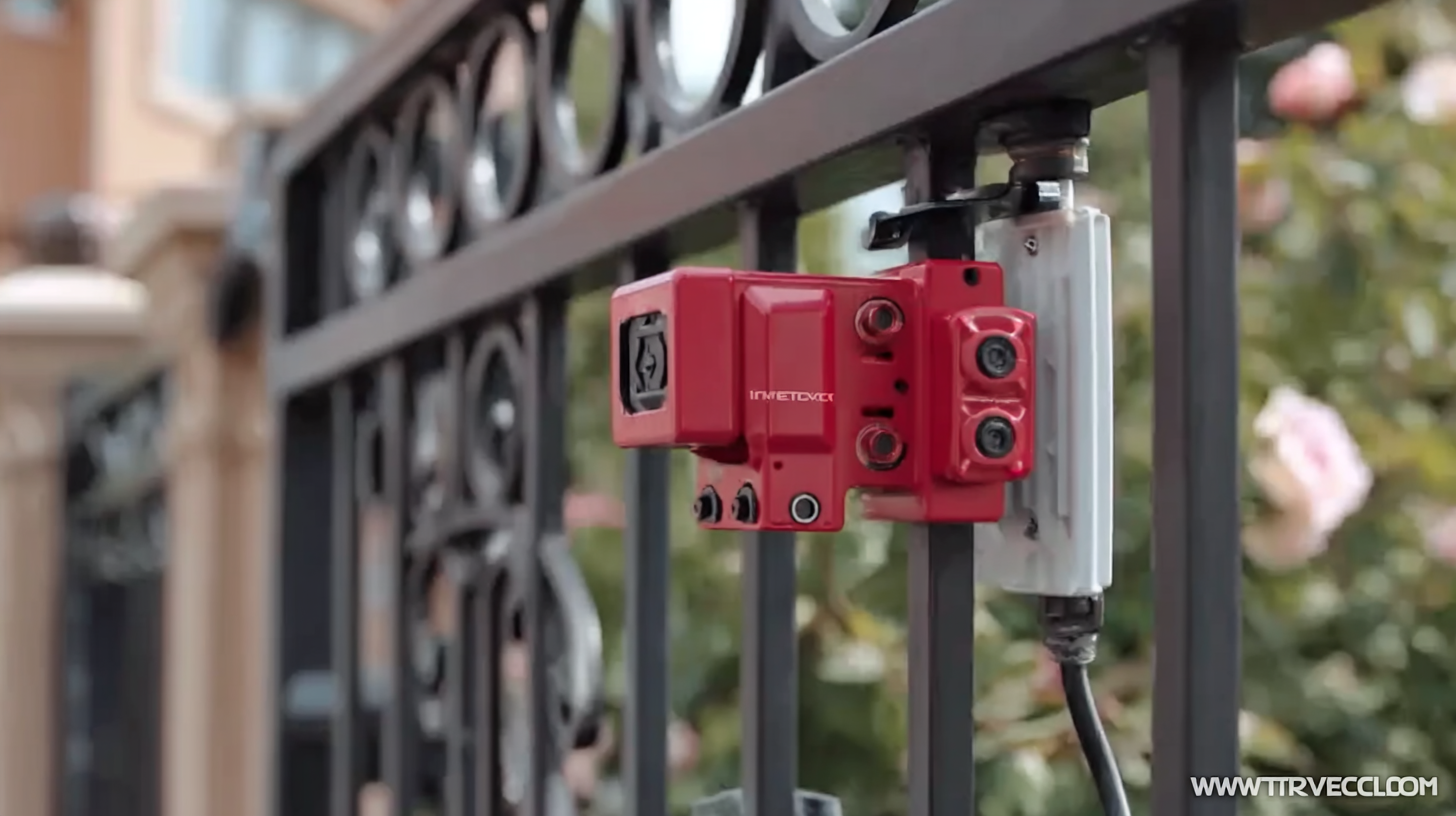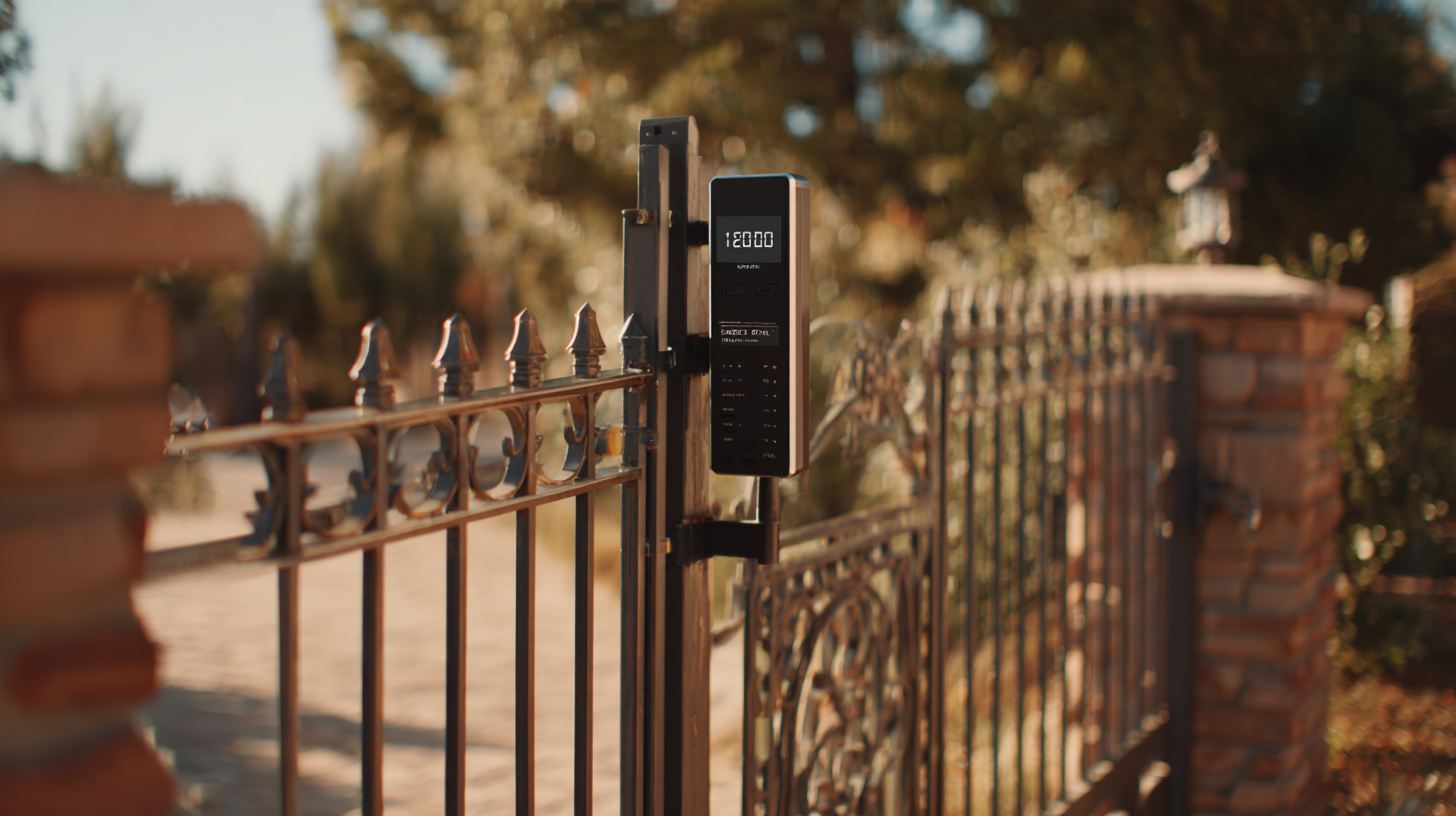Garage Openers - PFC CONTROLS | Miami, Gate Operators, Sliding Gate, Swing Gate, Intercoms, Turnstiles, Bollards, Barrier gate
- GATE ACCESS
- PEDESTRIAN ACCESS
- CONTACT US
- Main Menu
- GATE ACCESS
- PEDESTRIAN ACCESS
- CONTACT US
Innovative Trends Shaping the Next Generation of Best Automatic Gate Opener Kit Technology in 2025
As we head into 2025, the landscape of Automatic Gate Opener Kit technology is undergoing transformative changes, propelling innovation to new heights. With the increasing demand for efficiency, security, and smart home integration, manufacturers are exploring a myriad of alternatives that not only enhance functionality but also cater to diverse user preferences. This blog will delve into the innovative trends shaping the next generation of automatic gate openers, spotlighting technologies like solar-powered systems, smartphone connectivity, and sophisticated safety features. By examining these advancements, we aim to provide insights into how the Automatic Gate Opener Kit of the future will revolutionize the way we manage entry points to our homes and businesses while emphasizing convenience and reliability. Join us as we explore the exciting developments that are set to define the industry in the coming years.

Emerging Technologies in Automatic Gate Openers: What to Expect in 2025
The landscape of automatic gate opener technology is set to undergo significant transformation by 2025, driven by advancements that prioritize security, convenience, and energy efficiency. One of the most exciting emerging trends is the integration of Artificial Intelligence (AI) and machine learning. According to a report by Markets and Markets, the global market for smart automation systems, including automated gates, is expected to grow from $80 billion in 2020 to over $150 billion by 2025, reflecting a compound annual growth rate (CAGR) of 12.4%. This surge indicates increasing consumer demand for intelligent systems that can adapt to their environments and enhance user safety through real-time monitoring and predictive analytics.
Additionally, the incorporation of smart home technologies is revolutionizing how automatic gate openers operate. With the rise of the Internet of Things (IoT), we can expect gate openers that not only connect with smartphones but also integrate seamlessly with broader home automation systems. A report from Research and Markets highlights that by 2025, over 35% of new residential buildings in developed regions will feature IoT-enabled devices, underscoring the growing expectation for integrated smart solutions in everyday living. This shift not only adds convenience for users but also significantly enhances the energy efficiency of these systems, ultimately driving a new wave of innovation in the automatic gate opener market.
The Role of AI and IoT in Enhancing Gate Opener Performance
The integration of Artificial Intelligence (AI) and the Internet of Things (IoT) is transforming various industries, and the automatic gate opener technology is no exception. As we step into 2025, innovations driven by AI and IoT are set to enhance the performance of gate opener systems significantly. AI algorithms will enable predictive analytics, allowing these systems to anticipate and respond to user behaviors, improving both convenience and security. For instance, rather than relying solely on remote controls, users could operate gates through voice commands or mobile applications, ensuring a seamless interaction.
Moreover, the synergy between IoT and AI creates a networked environment where gate openers can communicate with other smart devices. This interconnectedness allows for more sophisticated security measures, such as real-time surveillance and automated alerts in case of unauthorized access. Such advancements not only boost the efficiency of gate operations but also contribute to a smarter, safer living space. With the continued evolution of AI sensors and IoT connectivity, automatic gate opener kits will become an integral part of the modern smart home ecosystem, shaping the future of residential and commercial security solutions.
Innovative Trends Shaping the Next Generation of Best Automatic Gate Opener Kit Technology in 2025 - The Role of AI and IoT in Enhancing Gate Opener Performance
| Feature | Description | Impact | Technology |
|---|---|---|---|
| AI Integration | Utilization of AI algorithms for predictive maintenance and enhanced security features. | Increases reliability and reduces unexpected failures. | Artificial Intelligence |
| IoT Connectivity | Smart gate openers connected to the internet for remote access and monitoring. | Allows users to control gates from anywhere, enhancing convenience. | Internet of Things |
| Energy Efficiency | Solar-powered options and energy-efficient motors. | Reduces electricity costs and environmental impact. | Renewable Energy Technologies |
| Enhanced Security Features | Facial recognition and motion detection capabilities. | Improves safety by preventing unauthorized access. | Biometric Technologies |
| User-Friendly Interfaces | Mobile apps and voice control for easier operation. | Enhances user experience and accessibility. | Mobile and Voice Recognition Technologies |
Sustainability Trends in the Production of Automatic Gate Opener Kits
In recent years, sustainability has become a pivotal focus in the production of automatic gate opener kits, reflecting a broader shift in consumer expectations and industry standards. According to a report by MarketsandMarkets, the global automated gate market is expected to grow significantly, reaching $1.8 billion by 2025. This growth is driven by the demand for eco-friendly technologies that not only enhance security but also minimize environmental impacts. Manufacturers are increasingly incorporating sustainable materials, such as recycled plastics and low-impact metals, into their products, thereby reducing the carbon footprint associated with production processes.
Furthermore, energy efficiency is gaining traction in the design of automatic gate openers. Recent studies indicate that consumers are now prioritizing products that consume less electricity or offer solar-powered options. A 2022 analysis by the International Energy Agency highlighted that adopting solar energy solutions in automated gate systems can lead to reductions in energy consumption by up to 30%, making them more appealing to environmentally conscious buyers. This trend not only aligns with global efforts to combat climate change but also meets the rising consumer demand for sustainable living solutions, propelling innovation in the automatic gate opener industry.
Innovative Trends in Automatic Gate Opener Kit Technology - 2025
A Glimpse into the Future: Smart Features Transforming Gate Systems
The landscape of gate opener technology is evolving rapidly, driven by innovative smart features that enhance security, convenience, and efficiency. As we approach 2025, we can expect to see automatic gate opener kits integrated with AI-powered systems capable of learning user patterns. These smart systems will not only anticipate the needs of homeowners but also adapt their operations based on daily routines, offering a seamless entry experience. Imagine a gate that opens automatically as you approach, guided by the recognition of your vehicle or even your smartphone.

Moreover, connectivity is becoming a cornerstone of modern gate systems. With the Internet of Things (IoT) at the forefront, future gate openers will be able to sync with home automation systems, creating an interconnected network that users can control remotely. Homeowners will enjoy the ability to monitor and control their gates from anywhere, receiving real-time alerts about any unapproved access attempts. Enhanced security features like facial recognition and biometric scanning will further ensure that only authorized individuals can enter, making homes safer than ever. As these trends unfold, the combination of artificial intelligence and IoT will redefine what we expect from automatic gate opener technology.
Quality Assurance in Chinese Manufacturing: A Key to Global Trust in Products
In the rapidly evolving world of automatic gate opener technologies, quality assurance in manufacturing has emerged as a cornerstone for building global trust in products. As Chinese manufacturers continue to dominate the market, the emphasis on robust quality control systems ensures that the next generation of gate openers not only meets but exceeds international standards. This is critical in establishing a reputation that resonates with consumers who prioritize reliability and safety in their automated systems.
In 2025, innovations in automatic gate opener kits will likely leverage advanced manufacturing techniques, including automation and precision engineering. Chinese companies are increasingly investing in these areas, thereby enhancing product durability and performance. As quality assurance processes integrate advanced analytics and real-time monitoring, manufacturers can swiftly address potential issues, resulting in a more resilient product lineup. This shift not only supports customer satisfaction but also strengthens the perception of Chinese manufacturing on a global scale, paving the way for a more reliable supply chain in the competitive landscape of automated technologies.

